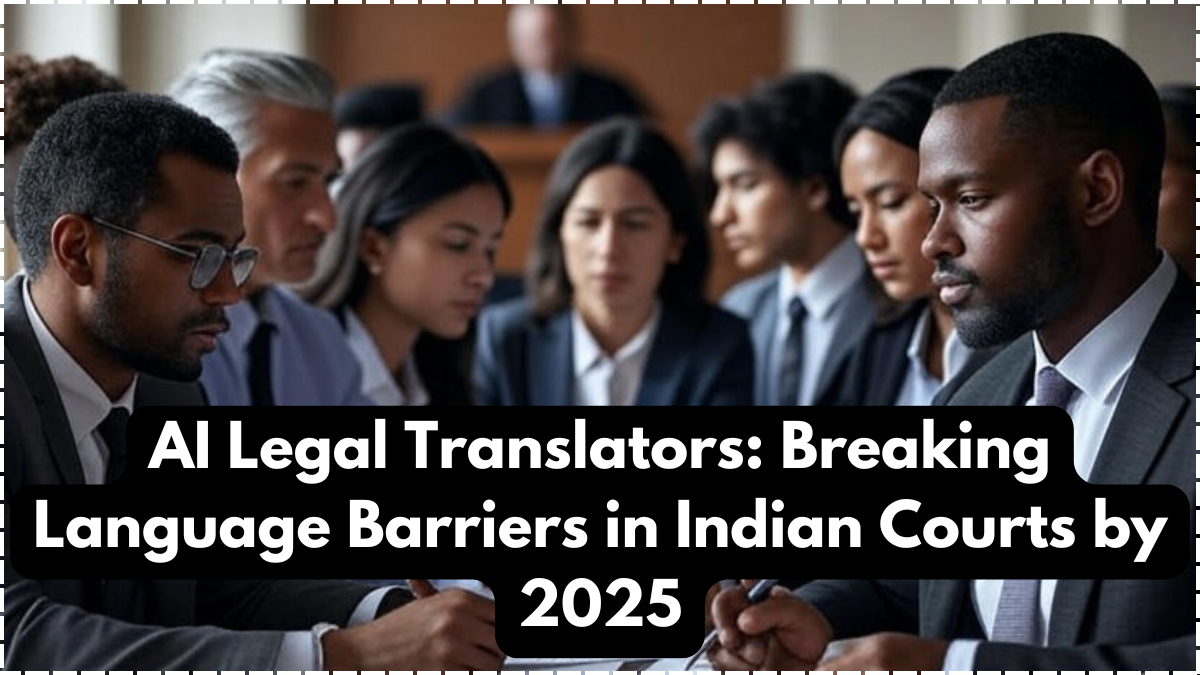In 2025, the Indian legal system is experiencing a digital transformation that many thought would take decades. At the heart of this revolution are AI legal translators India 2025, powerful tools designed to bridge the country’s massive linguistic diversity and make justice more accessible. With over 22 scheduled languages and countless dialects spoken across courtrooms, communication gaps have long hindered fairness and speed in judicial processes. Now, court language AI tools are stepping in where human translation often fell short.
AI doesn’t just translate — it understands context, legal jargon, and regional nuance. It ensures that whether a court case is happening in Tamil Nadu, Uttar Pradesh, or Assam, all parties can follow the proceedings clearly, regardless of their native tongue. This leap forward is bringing transparency and efficiency to a system that desperately needed it.

Why India Needed AI in Court Translation
For decades, India’s courts have struggled with language-related delays. Judges, lawyers, litigants, and clerks often speak different native languages, making translation a bottleneck in delivering justice. Human interpreters, while helpful, are not always available, accurate, or fast.
That’s where AI legal translators India 2025 have changed the game. These tools use machine learning, natural language processing, and large legal datasets to translate spoken and written content in real time. They are especially effective in:
-
Translating witness testimonies without altering meaning
-
Providing on-the-spot document translations for filings and affidavits
-
Ensuring judges and litigants understand one another instantly
-
Reducing misinterpretations that cause legal errors
The use of court language AI tools helps maintain fairness in multilingual courtrooms, where clarity is not just helpful — it’s legally essential.
Key Features of Court Language AI Tools in 2025
The new generation of AI tools is far more advanced than basic translation software. They are customized for Indian legal scenarios and built with cultural and judicial intelligence in mind. Here is a breakdown of what makes court language AI tools in 2025 truly game-changing:
Feature |
Functionality |
Benefit |
|---|---|---|
Real-time Speech Translation |
Converts live speech across 14+ Indian languages |
Smooth court hearings without delays |
Legal Jargon Recognition |
Understands legal phrases, case law, and terminology |
Higher translation accuracy |
Regional Accent Adaptation |
Trained on multiple dialects and accents |
Inclusive and localized translation |
Document Interpretation |
Reads and translates scanned legal documents instantly |
Faster documentation and case prep |
Multilingual Voice-to-Text |
Captures courtroom speech and converts to translated transcripts |
Instant and searchable records |
With tools like these, AI legal translators India 2025 are not just helping; they are now essential courtroom assistants.
How AI Is Shaping the Justice System
Beyond translation, the broader impact of court language AI tools is being felt throughout the Indian legal system. By removing the dependency on manual interpretation and transcription, courts are speeding up case resolution and improving accessibility for underrepresented communities.
Key benefits being seen across India:
-
Faster trial times due to reduced language confusion
-
Greater confidence among non-Hindi or non-English speaking litigants
-
Lower translation costs for public defenders and rural courts
-
Better compliance with multilingual documentation rules
As AI legal translators India 2025 continue to evolve, they are also improving through feedback from judges and lawyers, making them smarter and more efficient over time.
Challenges and Human Oversight
No technology is perfect, and AI legal translators India 2025 are no exception. Misinterpretation, especially in emotionally charged or nuanced testimony, can still occur. Regional slang, sarcasm, or idiomatic expressions can trip up even the best-trained AI.
Therefore, human legal translators still play a crucial supervisory role:
-
Final verification of translated judgments
-
Reviewing AI-generated transcripts for appeal cases
-
Collaborating with developers to refine datasets
-
Spot-checking complex legal language AI tools struggle with
This hybrid model ensures court language AI tools are used responsibly and ethically while still bringing massive efficiency gains.
Conclusion
India’s legal system is undergoing a major upgrade, and AI legal translators India 2025 are leading the charge in making courtrooms truly multilingual and inclusive. By leveraging court language AI tools, the country is not just speeding up trials but ensuring that every citizen, regardless of language, has a fair shot at justice.
In a nation as linguistically rich as India, these tools are not a luxury — they are a necessity. And as the tech continues to evolve, the vision of seamless, unbiased legal communication is becoming a reality.
FAQ
What are AI legal translators used for in Indian courts?
AI legal translators India 2025 are used to translate courtroom speech, legal documents, and proceedings across multiple Indian languages in real time.
How accurate are court language AI tools?
Court language AI tools in 2025 are highly accurate and trained on legal terminology, but human oversight is still necessary for final validation.
Which languages do AI legal translators support?
Most tools support Hindi, Tamil, Telugu, Bengali, Marathi, Kannada, Gujarati, and more — with over 14 Indian languages integrated.
Are these AI tools being used in all courts?
While major courts have adopted AI legal translators India 2025, smaller or rural courts are being integrated in phases.
Will AI fully replace human translators in Indian legal systems?
Not entirely. AI enhances speed and coverage, but human translators remain essential for nuanced interpretation and final legal accountability.
Click here to learn more